Path of Exile Easy Class to Start 30
No ARPG on the market can match the sheer depth of Path of Exile. This free-to-play dungeon crawler offers a degree of customization that would make other games blush. Everything from your skills to your endgame experience can be suited to your needs.
Unfortunately, Path of Exile's depth comes at the cost of accessibility. This is easily the most obtuse dungeon crawler out there, but don't let that dissuade you. Waiting beyond the game's brutal campaign lies one of the most feature-rich, diverse, and satisfying ARPGs in the genre. To help break down that insurmountable barrier, we've created this guide as a resource for players to reference when needed. Let's start by covering the cornerstone of most RPG games: classes.
Updated March 31st, 2021 by Charles Burgar:While not much has changed with Path of Exile since we originally wrote this guide, this article lacked one of the most important topics surrounding this game: damage scaling. This infamous topic is important for semi-new players to understand if they want to make their leveling experience smoother. We've added a section to this guide covering the basics of scaling your damage and a subsection reiterating the importance of capping your resistances. Stay sane, Exile!
Character Classes

Classes in Path of Exile dictate two key elements:
- Your starting position in the passive tree.
- Your available Ascendancies—Path of Exile's take on prestige classes.
Unlike most ARPGs, classes do not dictate which skills you can use. Path of Exile itemizes its skill system so that any class can use any skill—something we'll cover in the next section. For now, just know that classes do not impose build restrictions. If you want to play a Templar that summons zombies and uses a bow, you can.
Each class in Path of Exile still fills an archetypal role due to their location in the passive tree and their core attributes. There are three core attributes in Path of Exile, all of which should be familiar if you're a seasoned ARPG player.
- Strength: Scales Life and increases melee physical damage.
- Dexterity: Grants Accuracy rating and increased Evasion rating.
- Intelligence: Provides Mana and increased maximum Energy Shield—effectively a second life pool that behaves differently.
As for the classes themselves, there are seven in total:
- Marauder:The Strength-focused class. Best suited for melee builds.
- Templar:A Strength-Intelligence hybrid class. Best suited for spellsword and Mana-focused builds.
- Witch:The Intelligence-focused class. Best suited for spellcaster and minion builds.
- Shadow:An Intelligence/Dexterity hybrid class. Best suited for damage-over-time and trap/mine builds.
- Ranger:The Dexterity-focused class. Best suited for projectile-oriented builds.
- Duelist:A Dexterity/Strength hybrid class. Best suited for more mechanic-heavy melee builds.
- Scion:The true jack of all trades class. Best suited for extremely niche builds that need more passive points. Not recommended for new players.
Every class is available from the start excluding Scion, who must be rescued at the end of Act 3 before she becomes a playable character. Each class starts in its own section of the passive tree (shown below). As implied, the passive tree itself is the same between every class, hence its intimidating size. In theory, a Ranger could path to the top right of the tree near the Templar starting region, although this is highly inefficient in practice and usually not worth doing.
Starting Locations
- Marauder:Bottom left
- Templar:Top left
- Witch:Top
- Shadow:Top right
- Ranger:Bottom right
- Duelist:Bottom
- Scion:Center
Ascendancies

Every class in Path of Exile has a prestige class that can be unlocked throughout the course of the campaign. Named Ascendancies, these prestige classes offer a unique passive tree that each grant build-enabling features. Every class except Scion has three Ascendancies they can choose from—the Scion only gets one Ascendancy option.
To unlock an Ascendancy, you must complete a series of trap gauntlets named the Trials of Ascendancy. There are twelve you can find in the campaign, the first six being required to earn your prestige class. When the first six Trials are complete, interact with the statue in Act 3 to open the Aspirant's Trial, allowing you to enter the Lord's Labyrinth. Successfully completing a Labyrinth run without dying unlocks your Ascendancy.
For a list of Ascendancies and their respective nodes, consult this Path of Exile webpage.
What is likely more useful for you are the locations for each Trial. They are listed below in order of appearance:
- Act 1: The Lower Prison
- Act 2: The Crypt, Level 1
- Act 2: The Chamber of Sins, Level 2
- Act 3: The Crematorium
- Act 3: The Catacombs
- Act 3: The Imperial Gardens
- Act 6: The Prison
- Act 7: The Crypt
- Act 7: The Chamber of Sins, Level 2
- Act 8: The Bath House
- Act 9: The Tunnel
- Act 10: The Ossuary
Once you reach Maps, Path of Exile's endgame system, you can find six additional Trials at random. Completing these Trials will allow for an Eternal Labyrinth run, which must be completed to earn the final two Ascendancy points for your class.
How Do Skills Work?
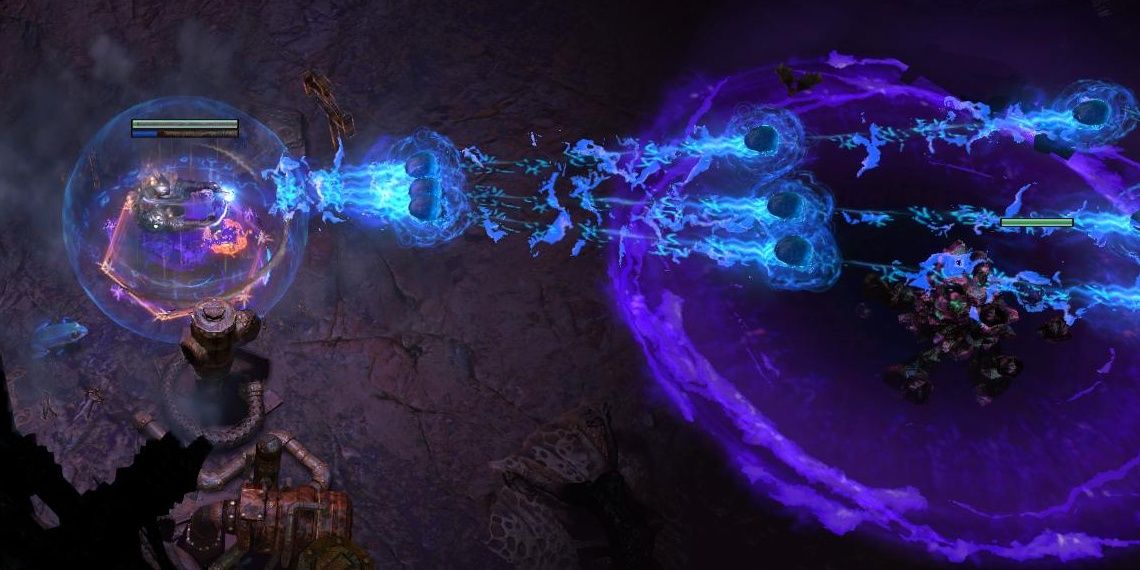
Skills in Path of Exile are provided by your gear instead of your chosen class. Nearly every skill is provided by a Skill Gem, a small item that can be socketed into weapons, armor, and certain jewelry. As long as you meet the Skill Gem's attribute and level requirements, you can equip it.
Note that the color of your Skill Gem dictates what gem socket it can enter. For example, a Dexterity-focused Skill Gem that's green can only go in items with a green or white socket. You can view an item's sockets by hovering over it with your cursor.
Pro-Tip: You can have gem sockets appear on items at all-times by toggling the "Always Show Sockets" option in the options menu.
Newly-socketed skills will automatically appear on your skill bar on the bottom right of your screen. If you wish to change a skill's input, click on your skill bar and select the skill you want to be bound to that input.
To recap:
- Purchase or find a Skill Gem you wish to use.
- Equip a weapon or armor piece with a gem socket that matches the color of said Skill Gem.
- Socket the Skill Gem into your item.
- Bind the skill to an input of choice (found on the bottom right of your screen on PC).
Support Gems
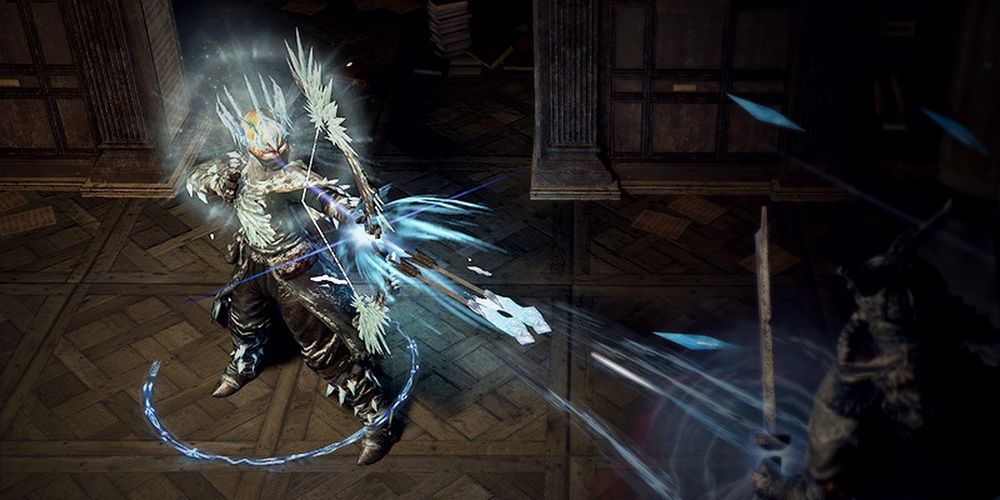
This is where most players get confused. Support Gems are socketable gems that solely provide buffs to Skill Gems. These gemssupport skills; they do notgrant skills.
For example, someone that finds their Fireball spell lacking damage can slot in the Combustion Support gem to enhance its fire and burning damage. Combustion didn't add a new skill; it supported Fireball, hence why they're called Support Gems.
Two things are needed for a Support Gem to work:
- A link must be connecting the Skill Gem and Support Gem sockets on the gear piece.
- Both gems must share at least one tag.
Gem Links
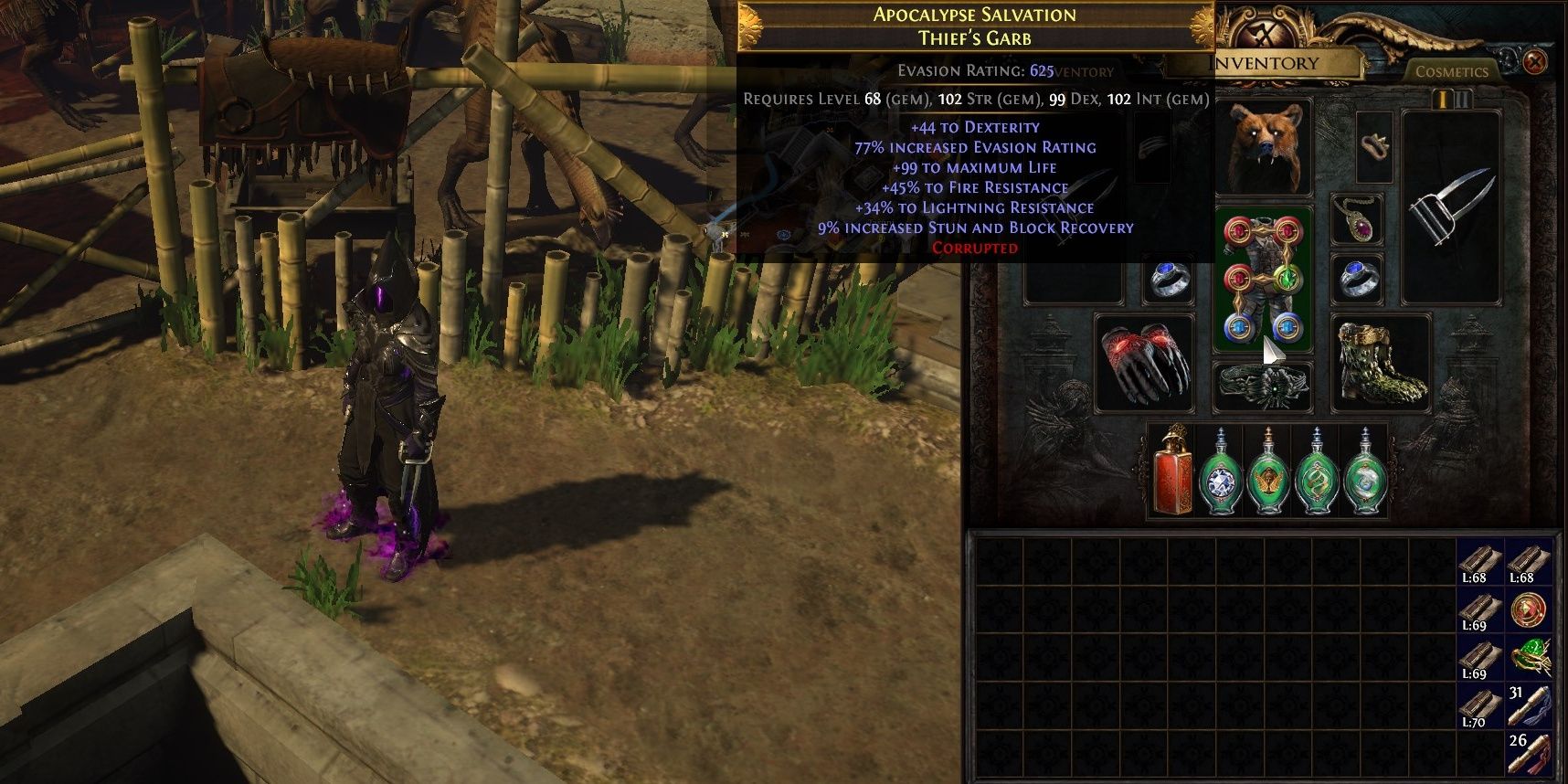
Gear links are golden lines that connect gem sockets together. The example item above has six sockets, yet it only has four links connecting the sockets. Players typically refer to this as a "five-link" armor piece since five sockets are linked together.
If you can't tell if an item is linked, socket a Skill Gem and a Support Gem onto an item. If you hover over your Skill Gem, the Support Gem should glow. If it doesn't, the item isn't linked.
Gem Tags
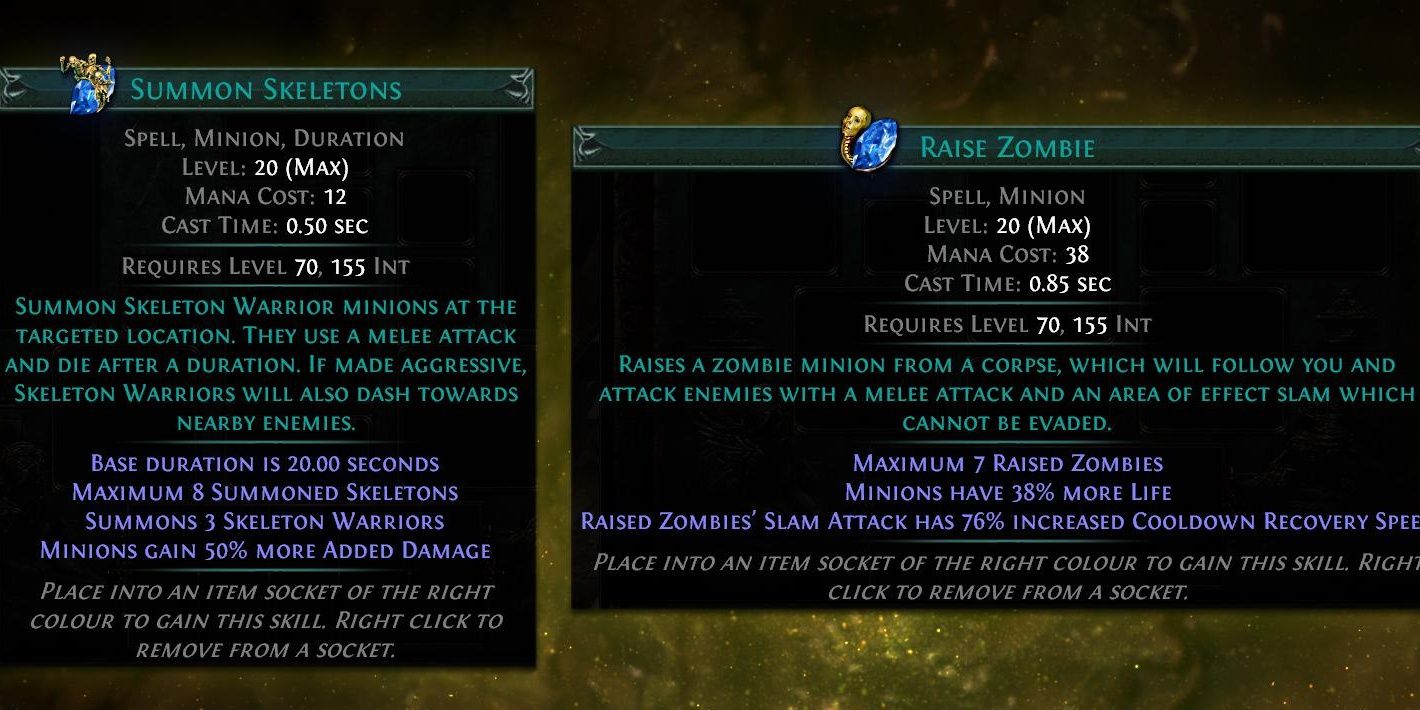
Tags are a simple concept that most newer players overlook. To keep things simple, tags are properties that a gem has denoted as text. Gem tags can be found directly under the name of the gem. If both a Skill and Support Gem share at least one tag, they are compatible with each other. Let's analyze a Skill Gem together to show this system in action.
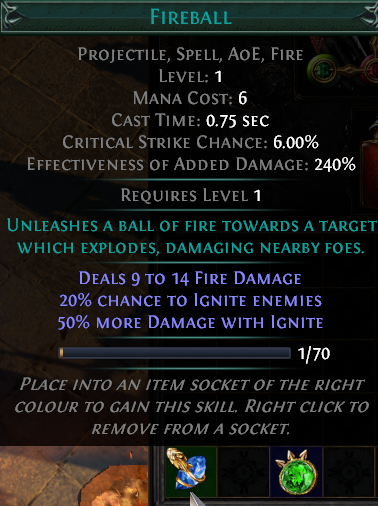
Fireball is a straightforward spell in most ARPGs. Your character spawns a flaming projectile that hits targets. Tags break this spell down into core characteristics that Support Gems can bend. In Fireball's case, it has the Projectile, Spell, AoE, and Fire tags as seen under its name. This means that any Support Gems that have at least one of those four properties can affect Fireball.
Let's say you wanted Fireball to shoot three projectiles instead of one. You could consider using the Lesser Multiple Projectiles Support gem.
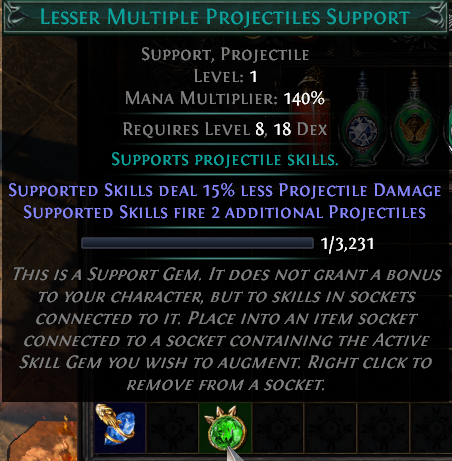
The tags on this gem read Support and Projectile, meaning it can support any skill with the Projectile tag. Since Fireball has Projectile as one of its tags, Lesser Multiple Projectiles will work. Now your Fireball will be firing three projectiles with each cast instead of one.
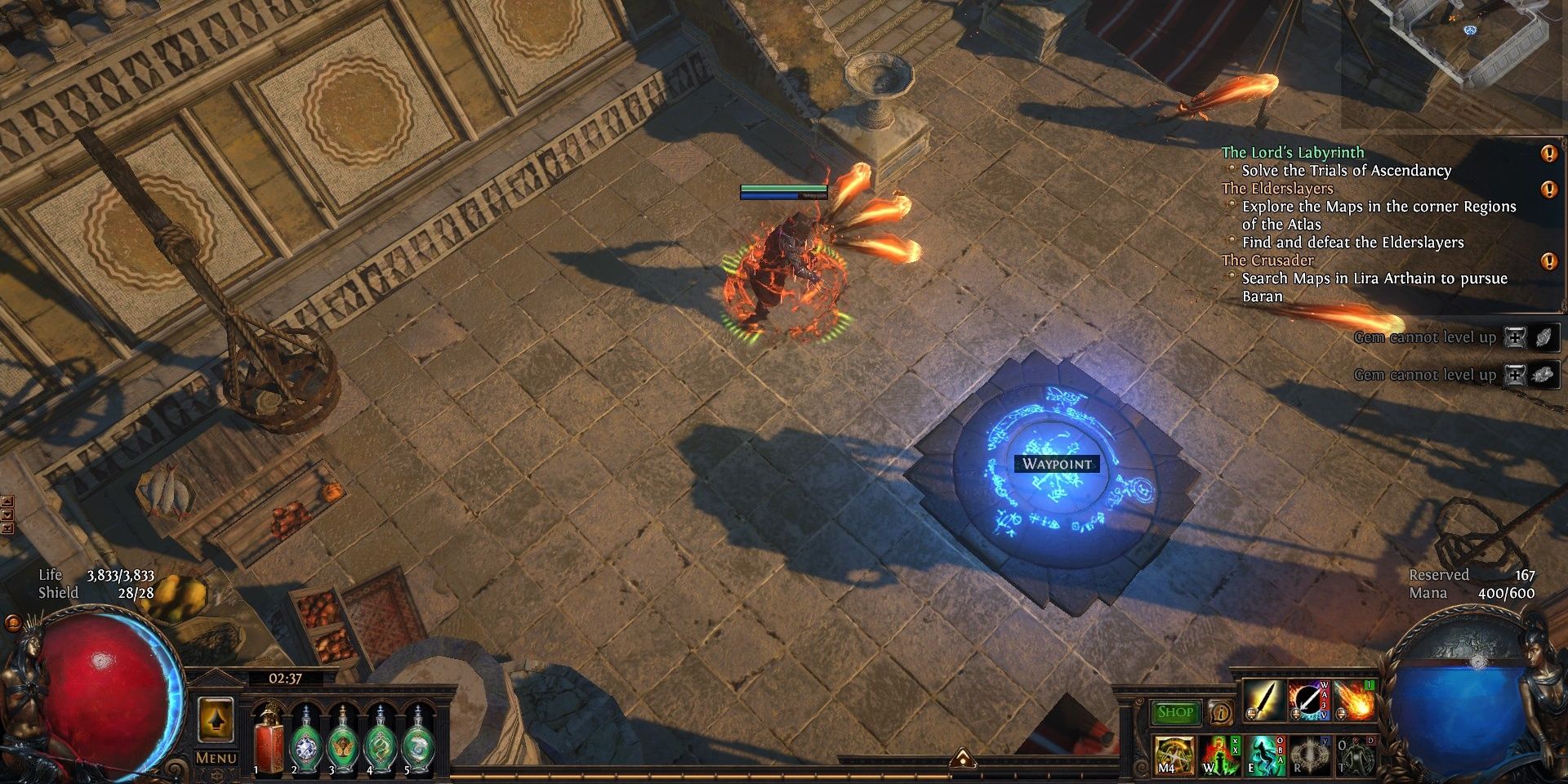
As you can see, the system isn't too complicated on its own. Just keep gem tags in mind if you can't easily determine if a Support Gem would work for a certain skill.
Finding A Build That's Right For You
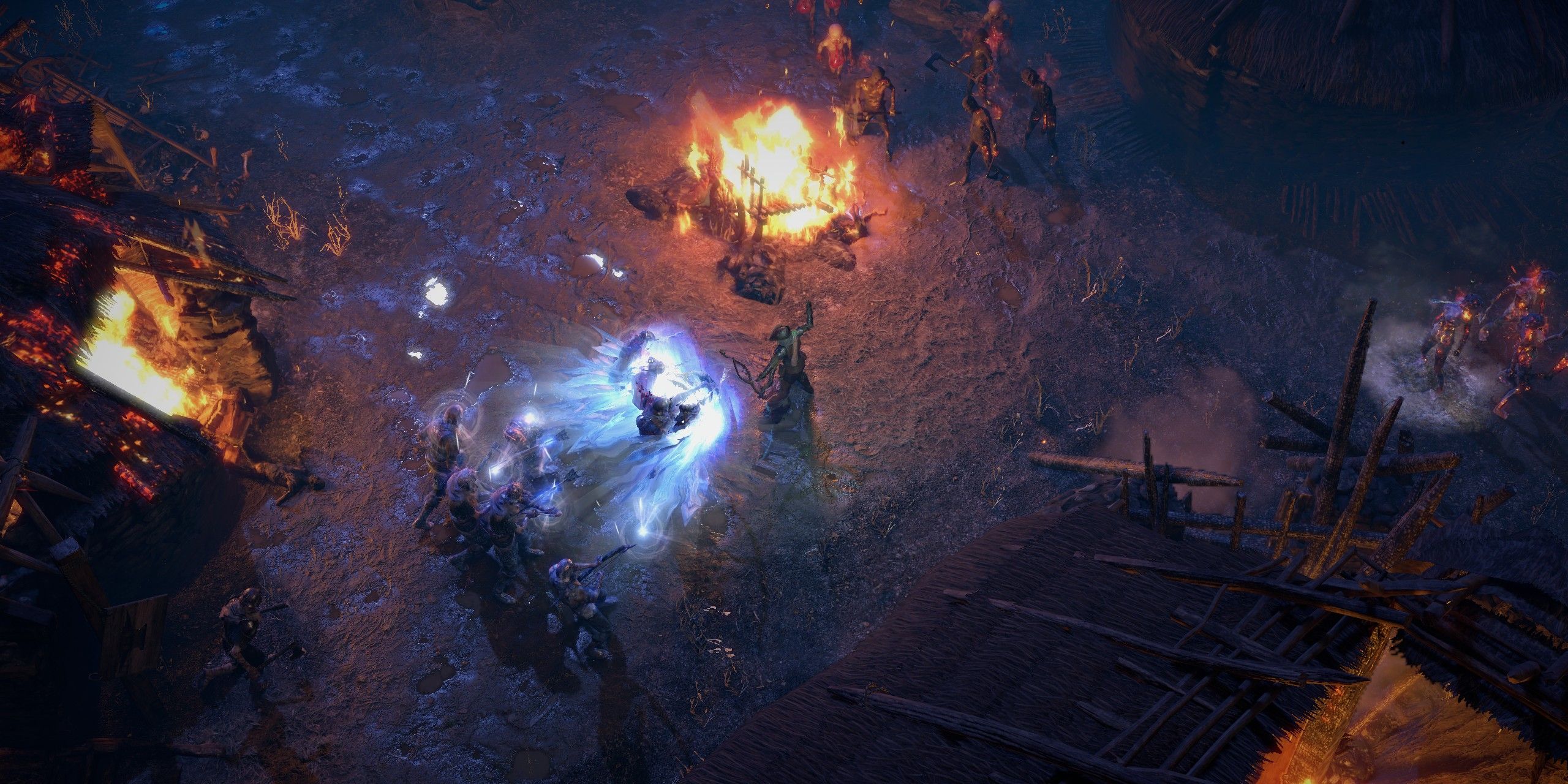
Newer players shouldn't create builds on their own. Path of Exile has so many moving parts that making a good build without external help is nearly impossible.
Instead, look for a build guide that utilizes the skill or class that interests you most. For example, if you want to fire arcs of chain lightning between targets to disintegrate your foes, you would want to look up a build for the Arc skill. Similarly, someone that wants to make a bow build would want to look at a guide that uses the Ranger class.
Do not follow build guides that focus on endgame content or absurd damage numbers. Most of these builds are expensive, mechanically complex, and far from new-player friendly. Guides that are thorough and easy to parse are far better.
Here are a few beginner-friendly build guides that are easy to understand. If you play one or two of these builds, you will gain a much stronger understanding of Path of Exile's core gameplay systems.
- Enki's Arc Witch (PoE Forums)
- Esoro's Bleed-Bow Gladiator (YouTube)
- Bergerbrush's Impale Cyclone Champion (PoE Forums)
- Havoc209's Essence Drain Trickster (PoE Forums)
- thi3n's Storm Brand Inquisitor (PoE Forums)
- Remi's Toxic Rain Pathfinder (PoE Forums)
Leagues And Game Modes
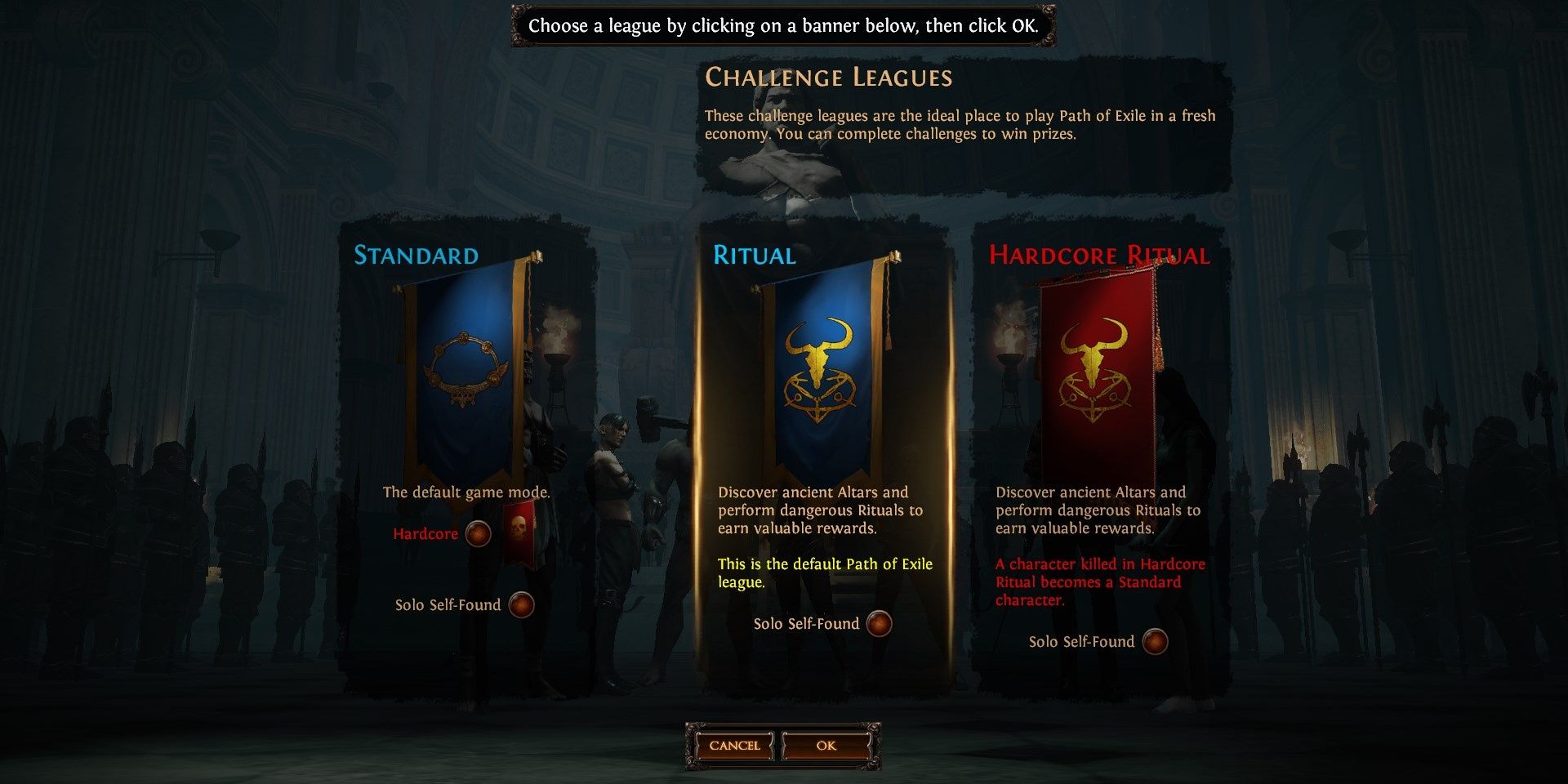
Classic ARPG staples such as Hardcore mode are present in Path of Exile. There are also seasonal modes named Leagues that players can join.
Path of Exile has the following game modes:
- Standard: A game world where characters and the economy are never reset. Dying in Standard only incurs an Experience penalty at higher levels.
- Hardcore: Similar to Standard but if you die, your character is migrated to Standard.
- League: A game world where characters and the economy are recently created. Leagues include a new game mechanic for players to exploit. When a League ends, all characters are migrated to Standard.
- Hardcore League: Similar to a League but if you die, your character is migrated to Standard.
- Solo Self-Found (SSF): An opt-in challenge that prevents you from trading and creating parties with other players. NPCs are unaffected. Unlocked after rescuing the Scion in Act 3.
- Hardcore Solo Self-Found (HCSSF): The same as SSF but migrates your character to Standard if you die.
What Are Leagues?
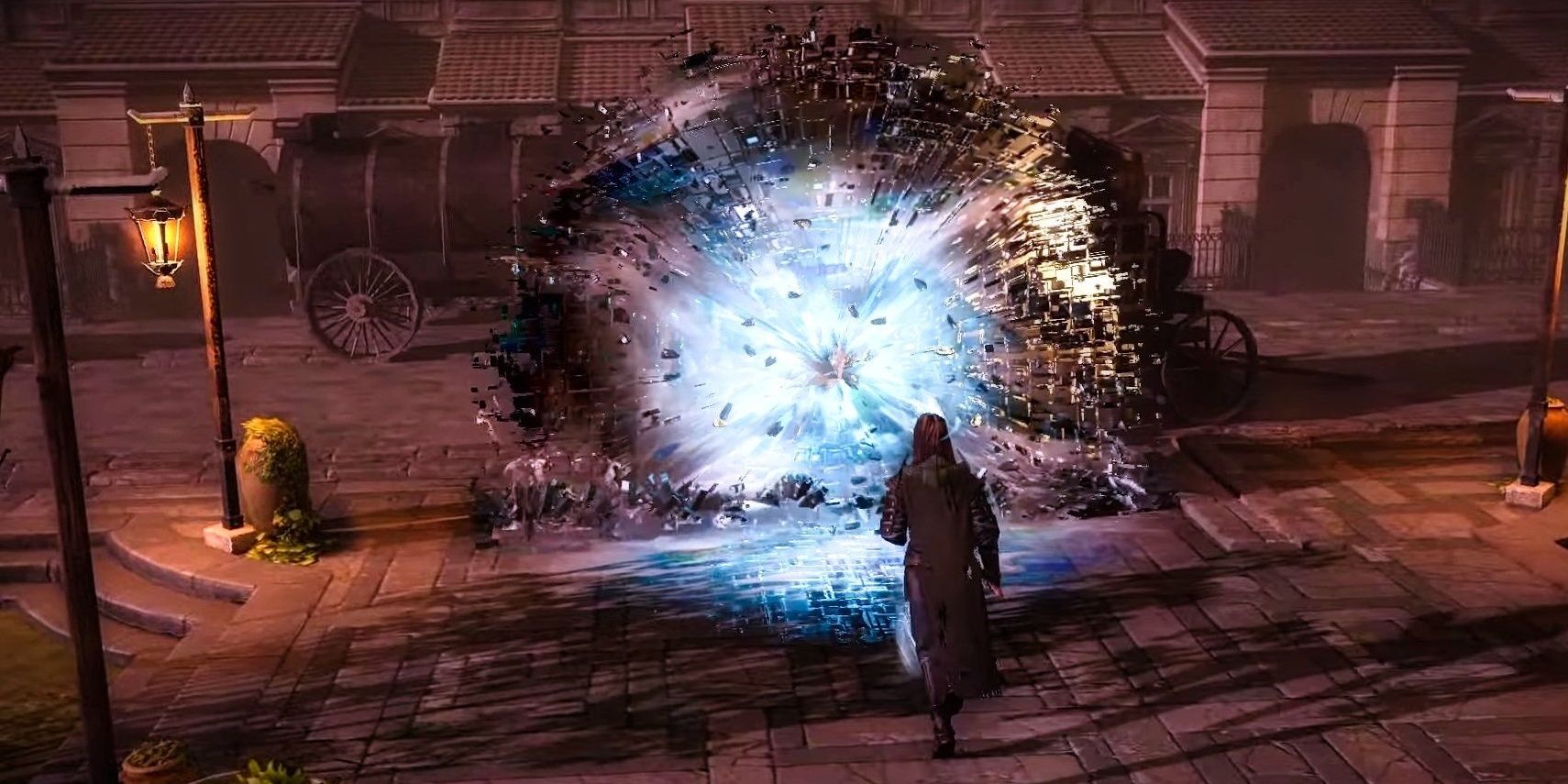
Path of Exile has seasonal content releases named Leagues that players can partake in. Leagues typically last for three months, introduce a new gameplay mechanic, and have a fresh economy. Once a League ends, all of that League's characters will be migrated to their respective Standard variant. Hardcore League characters migrate to Hardcore, and Softcore League characters migrate to Standard.
Leveling Your Character

Experience Points
Path of Exile only provides experience points when players kill monsters. Unlike most ARPGs, quests do not grant experience points. Instead, some quests grant skill points that can be allocated to your character's passive tree.
Most veteran Path of Exile players will run past common and rare mobs entirely, focusing only on mandatory bosses and magic packs of mobs. This is due to the absurd amount of XP magic mobs grant, allowing players to stay at parity with each zone while avoiding most enemies in each area.
Newer players don't have to use this advice when playing on their first few characters, but experienced Path of Exile players that want to speed up their leveling process should keep this tip in mind.
Skill Points
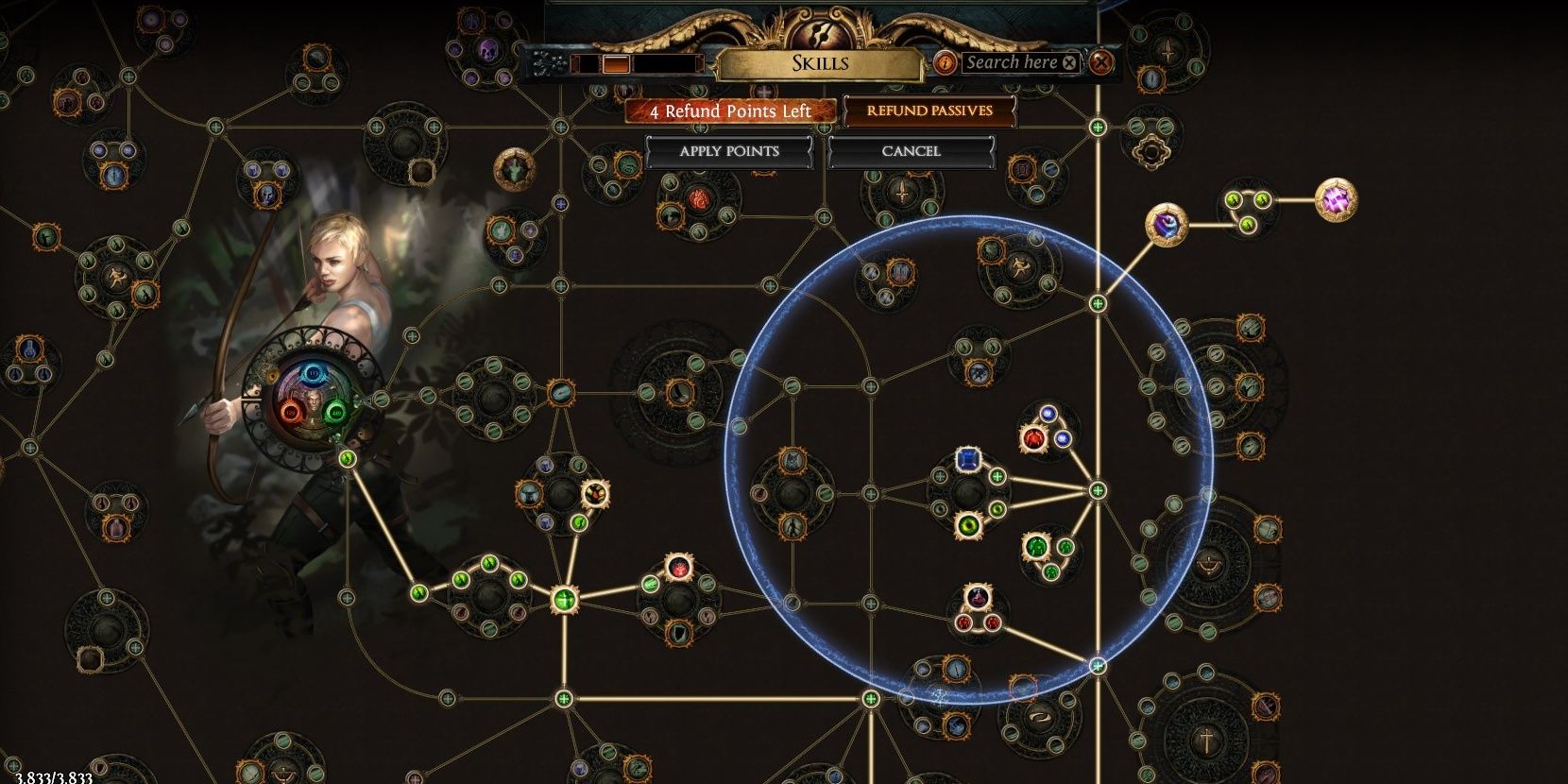
Skill points come from two sources in Path of Exile:
- Leveling up
- Completing certain quests
A surprising amount of Path of Exile's side quests grant skill points when completed. Skill points are integral to reaching your build's fullest potential, which is why completing these quests is paramount for any player.
For a comprehensive list of every quest that grants skill points, consult this wiki article.
Leveling Tips

Most build guides will offer curated tips to make the leveling process as smooth as possible. No matter how different these builds are, most of them share similar leveling strategies and tips that you'll come to understand as you create more builds. To help kickstart that process, we will list a few leveling tips to make the first few Acts a smoother experience.
General Tips
- Reach 75% Fire, Cold, and Lightning Resistance ASAP! Path of Exile is balanced around your character having capped resistances. These resistances will be permanently reduced by 30% at the end of Act 5 and Act 10, so it is imperative you find gear that counteracts this negative. You can check your resistances in the defense tab of your character sheet ("C" by default on PC).
- Flasks are extremely strong and should be used often. You gain flask charges from killing monsters and leveling up. If your build has good clear speed, your flasks should always be active.
- Don't grab everything you see! Your inventory is extremely small in Path of Exile. Focus on grabbing rare items, jewels, and currency. Alternatively, install a loot filter (explained in the "Must-Have Community Tools" section).
- Rebind your left-click from default attack to move only. This prevents your character from auto-attacking while moving.
Act 1
- After completing the "Mercy Mission" quest, select the Quicksilver Flask as your reward. This drastically boosts your movement speed while active.
- Keep your eyes out for boots that increase your movement speed.
- Obtain a Sapphire Ring before fighting Merveil, the final boss of this Act. If you can't find one, you can make one by selling an Intelligence (blue) Skill Gem and an Iron Ring to any vendor.
Act 2
- When searching for Alira in The Western Forest, look out for a stone path perpendicular to the main road. This always leads to her camp. Conversely, the opposite end leads to the Weaver's Nest.
- Don't forget to talk to Bestel in Act 1 after completing the quest "The Way Forward" to receive your skill point reward.
- The Vaal Ruins has the worst level layout in the game. Prepare to spend a lot of time here. This is less of a tip and more of a heads-up.
Act 3
- Obtain the Thaumetic Sulphite quest item in The Docks—a zone north of The Battlefront—before traveling to The Solaris Temple. This saves a lot of backtracking.
- Complete a normal Labyrinth run before facing Dominus, the final boss of this Act.
- Try to reach 75% Fire, Cold, and Lightning Resistance near the end of this Act or the start of Act 4; elemental damage starts becoming lethal around this point.
Those tips should make the earlier portions of Path of Exile easier to level through. If you need a more thorough leveling guide, consult the build guide you're following or this step-by-step Act leveling guide from POE Vault.
Currency And Gear
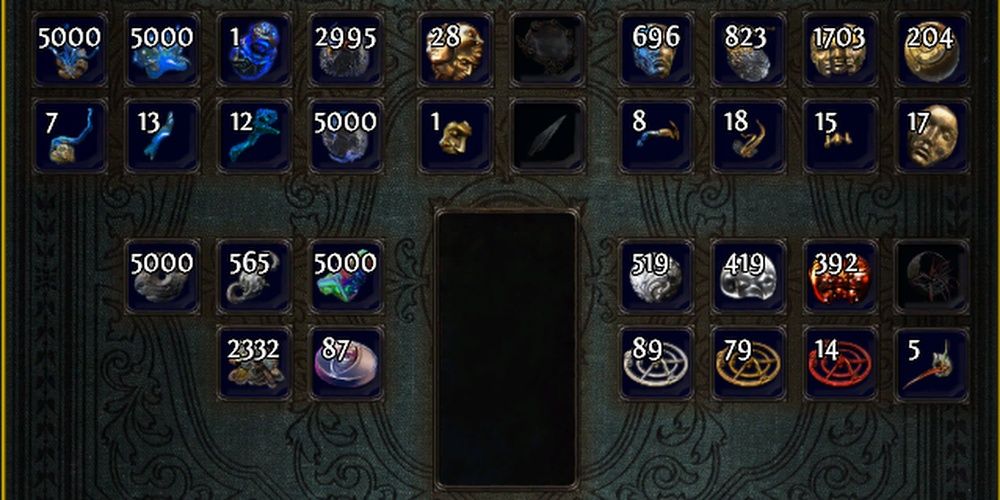
Currency
Gold doesn't exist in Path of Exile, at least not as a unified currency type. Path of Exile has a multitude of currency types that all interact with items in some way. Currency items are useful both for trading with players and for crafting.
As a new player, it is wise to save any currency you stumble across. Don't use these currency types to craft or modify items unless you know what you're doing or need a gear upgrade.
For those curious, here is a list of every basic currency type in Path of Exile. This information is not needed if you're completely new to the game.
- Scroll of Wisdom:Identifies items with modifiers.
- Portal Scroll:Opens a portal to town.
- Orb of Transmutation:Upgrades a normal item to a magic item.
- Orb of Alteration: Rerolls a magic item with new properties.
- Orb of Augmentation:Adds a modifier to a magic item.
- Chance Orb:Upgrades a normal item to a random rarity.
- Regal Orb:Upgrades a magic item to a rare item. Uncommon.
- Chaos Orb:Rerolls a rare item with new properties. Uncommon; the most used currency for trading with other players.
- Exalted Orb: Adds a modifier to a rare item. Extremely rare.
- Vaal Orb:Corrupts an item, modifying it unpredictably. When an item is corrupted, it can no longer be modified.
- Mirror of Kalandra:Creates a copy of a non-Unique, non-corrupted item. The rarest item in Path of Exile.
- Blessed Orb:Rerolls an item's implicit value.
- Divine Orb:Rerolls an item's prefix and suffix values. Uncommon.
- Chromatic Orb:Recolors the gem sockets on an item.
- Jeweler's Orb:Rerolls the number of gem sockets on an item.
- Orb of Fusing:Reforges the number of links between gem sockets on an item.
Far more advanced, endgame currency types exist in Path of Exile, but these are all of the major ones the community uses or frequently reference. As you can see, everything except Portal Scrolls modify an item in some fashion. This is why picking up any currency you find early-game is important. These items always have some sort of value.
Gear
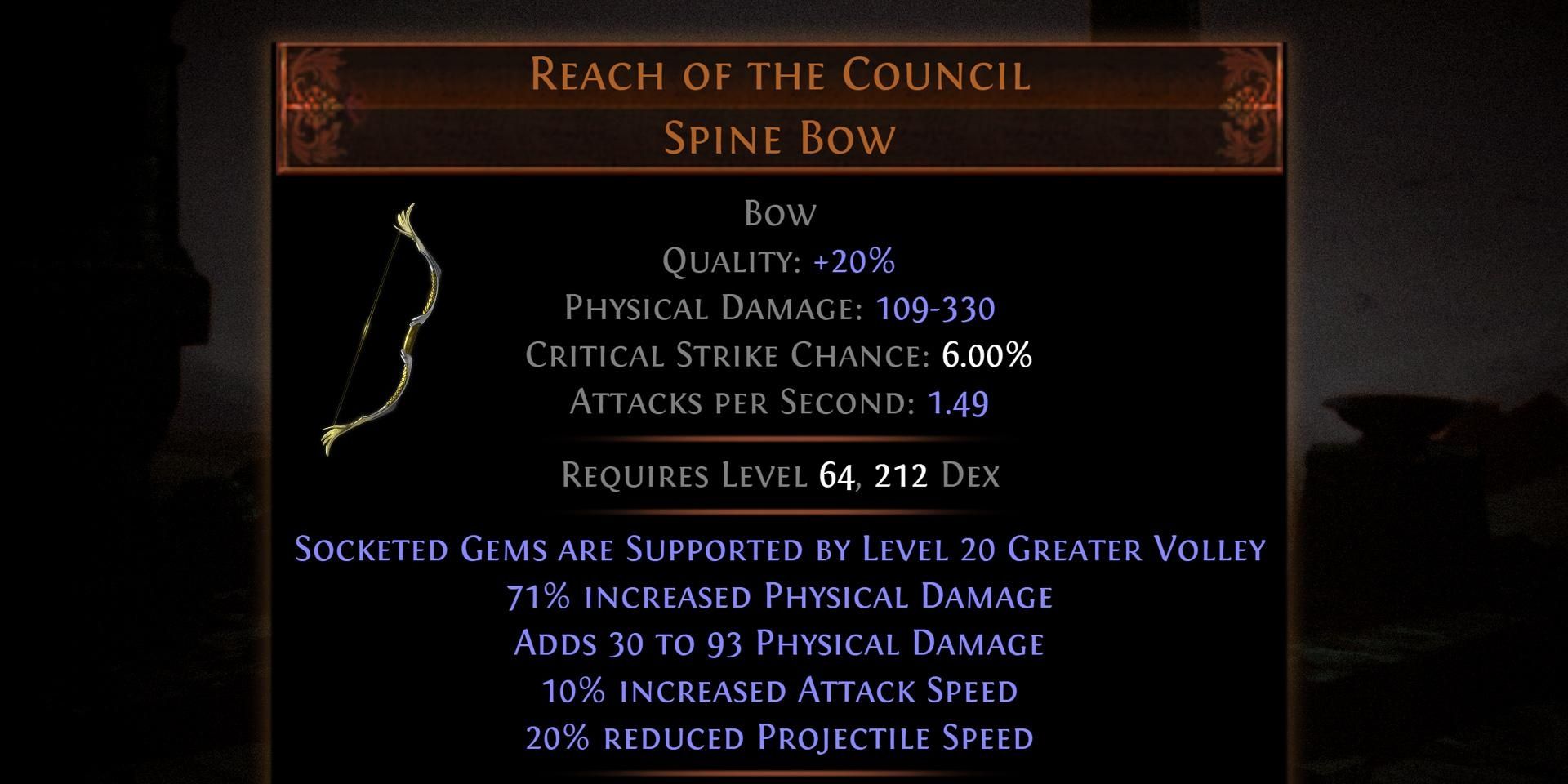
Items in Path of Exile drop in one of four different rarities:
- Normal:An item with no prefixes or suffixes. In other words, an item with minimal modifiers. These items are common.
- Magic:An item with one prefix and/or suffix. These items are uncommon.
- Rare:An item with up to three prefixes and suffixes. Rare items are the most powerful in the game. These items are uncommon, although good rares are hard to come by.
- Unique:Items with properties that can't be found elsewhere. These are not Legendaries! Uniques enable builds, typically with a negative associated with them. Unique items range from uncommon to extremely rare.
As with most ARPGs, items come with a suite of randomly-rolled modifiers that provide offensive and defensive stats. For 99% of cases, modifiers come in the forms of prefixes and suffixes. Prefixes and suffixes are not the same; they both have different modifiers they can apply to an item. For example, modifying the player's Life stat is a prefix, while adding resistances is a suffix mod. Both are vital to making a character tanky, but they both come from different mod pools.
For a full list of potential modifiers on an item, consult the Path of Exile database website—poedb for short. Only experienced players should visit this website, as it is really easy to get overwhelmed while looking at an item's pool of modifiers.
Crafting
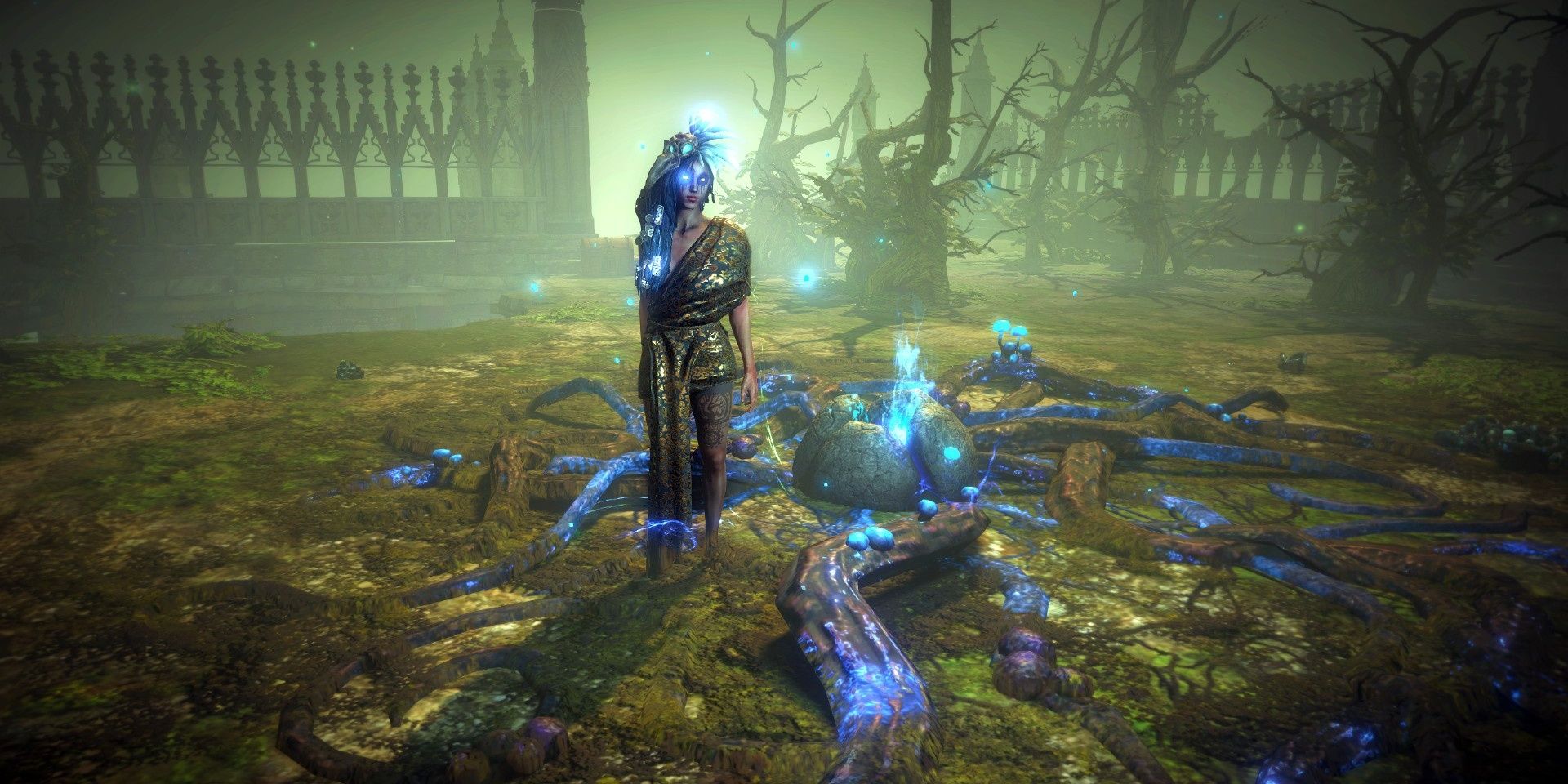
Learning how to craft is a complex subject that is far from new-player friendly. If you are adamant about learning how to craft in Path of Exile, YouTuber ZiggyD has made an excellent crafting guide that's filled with useful information for intermediate players. You can watch it here.
Damage And Resistances
This section is meant for players that have a few hours of Path of Exile experience under their belt. If you've never played Path of Exile before, skip to the last section of the guide to prevent a massive amount of confusion.
Resistances
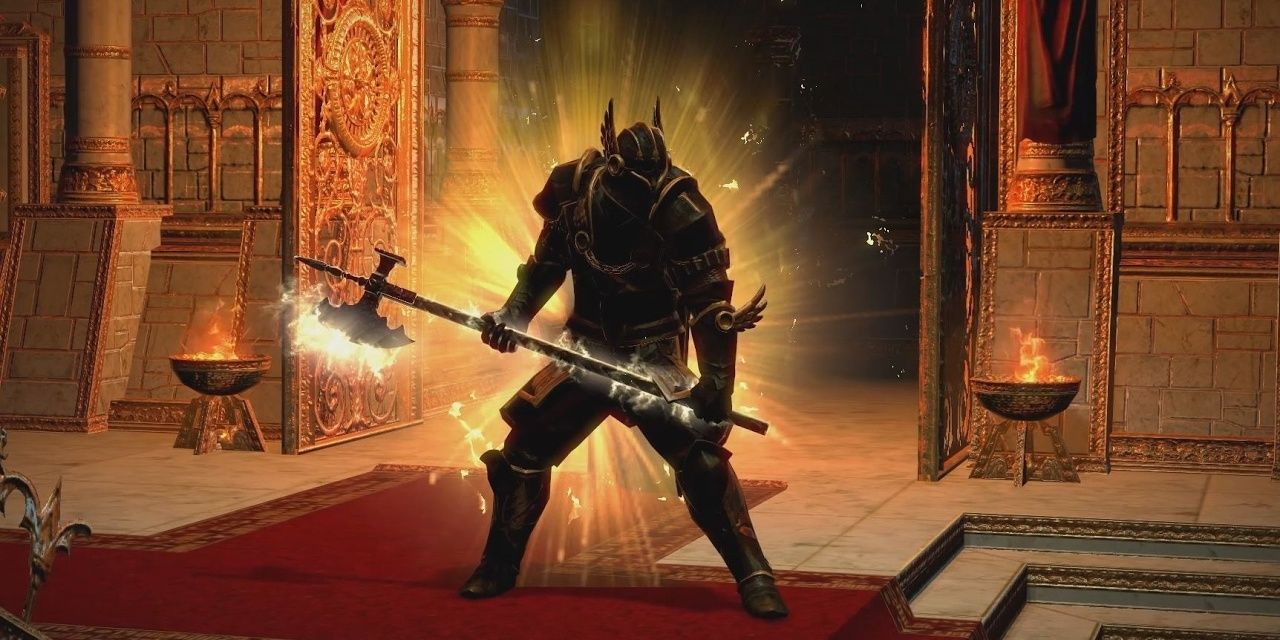
One of the first things you'll notice jumping into Path of Exile is how hard this game is. Enemies frequently one-shot you at later Acts, and the game doesn't do a great job explaining why this is.
Path of Exile is balanced around you having capped Fire, Cold, and Lightning Resistance. Most enemies deal some form of elemental damage, so it's imperative that you reach the 75% cap as soon as possible. You can check your resistances by opening your character sheet (default "C" on PC). Damage resistance to Physical and Chaos Damage, provided by Armour and Chaos Resistance, respectively, are useful but not mandatory to gear for like Elemental Resistances are.
Note:When you finish Act 5 and Act 10, you will permanently lose 30% to all elemental resistances. Try to overcap your resistances by 30% before completing either of these Acts.
Why Damage Scaling Matters
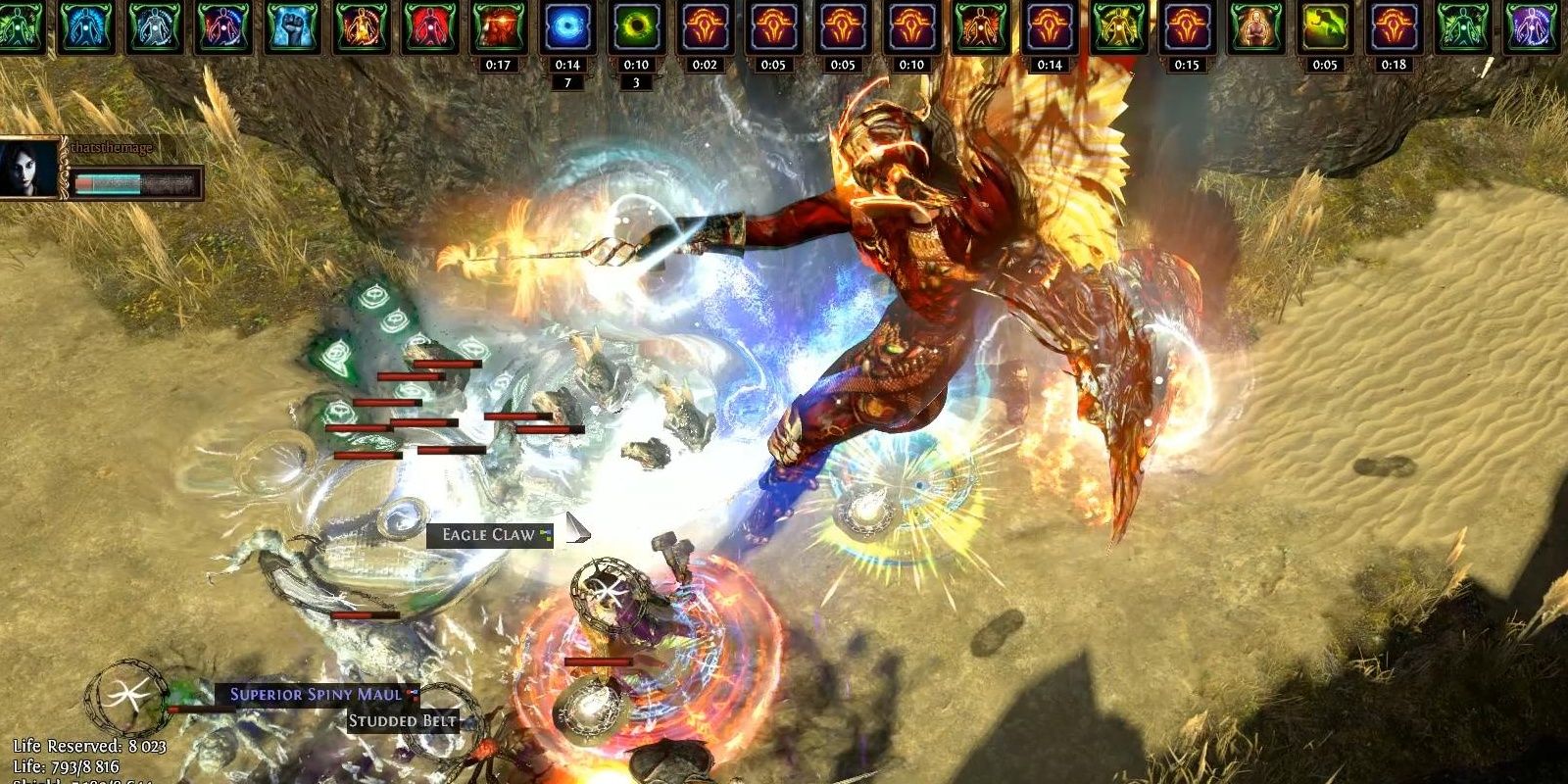
In Path of Exile, the best defense is an overpowering offense. If you can kill enemies before they can react, you'll take zero damage since they never got a chance to retaliate. This is why so many builds focus on outputting as much damage as quickly as possible, usually forgoing defensive capabilities excluding summoners and certain niche builds.
To one-shot everything on your screen, you'll need to understand how damage scaling works. This can get rather complicated, so don't get frustrated if this doesn't make sense the first time you read it. Following build guides and making your own builds are the fastest ways of learning this.
Increase Vs. More
Scaling your damage in Path of Exile can happen through one of two modifiers: additive multipliers and multiplicative modifiers. Here's what both terms mean:
- Additive:Multiple sources of additive damage areadded together before damage calculation.
- Multiplicative:These damage sources aremultipliedtogether before damage calculation.
You can remember both asadditive andmultiplicative. Path of Exile refers to these modifiers as "increased" and "more," respectively. Increased modifiers are powerful while leveling, as you won't have many sources of multiplicative damage yet. More modifiers are much stronger in the endgame, as they will exponentially increase the damage you dish out.
Note:There is one exception to the rule above: "increased damage taken" modifiers. These aremultiplicativesince theymultiplythe damage an enemy takes.
Damage Scaling Sources

In general, you'll be scaling your build's damage through your Passive Tree, Skill and Support Gems, gear, and your Ascendancy. There are more ways to scale your damage than that, but that's the gist.
Increased Damage Sources
- Passive Tree nodes
- Gear (local modifiers)
More Damage Sources
- Support Gems
- Elemental penetration/reductions
- Ascendancy notables (varies from class to class)
- Keystones from the Passive Tree
- Certain Flasks
This is why melee players need to upgrade their gear frequently, why spellcasters need to level their skills ASAP, and why certain Ascendancies are considered top-tier while others are seldom used. In general, if you want to make your build stronger, the best things to do are:
- Upgrade your gear
- Level your Skill and Support Gems
- Link more Support Gems to your skills
- Ascend (if possible)
- Penetrate enemy resistances
There are far more ways of scaling your damage than these, but this should give you a rough idea as to what you should be focusing on when your damage starts falling off in later Acts or Maps.

Before you delve into the harsh world of Wraeclast, you should know of a few community resources that make the game much more enjoyable. As solid as Path of Exile's endgame and crafting systems are, quality of life is not the game's strong suit. Fortunately, the community has fixed most of these pain points.
- Neversink's Loot Filter:Default filter for console players. This loot filter will only show items relevant to you. Garbage items are hidden from view, and rarer items are given unique backgrounds and font sizes. This is downright mandatory on PC. Installing this filter is explained in the "Loot Filters" subsection.
- Path of Exile Trade:You can find, purchase, and sell items through this website. If you own a Premium Stash Tab (obtained from the in-game item shop), you can list items from your Stash Tab to this website with no hassle.
- Path of Exile Gamepedia Wiki:Provides information on every aspect of Path of Exile.
- Path of Building Community Fork: You can create builds and configure character stats and gear with this app. It is handy for theorycrafting builds and sharing ideas with members of the community. The community fork is more up-to-date.
- PoELab:If you keep dying in Labyrinth runs, this website is a blessing. It provides a map detailing the current Labyrinth layout, room modifiers, and Izaro traits.
- Awakened PoE Trade:This tool lets you look up an item's value through a simple keystroke. This tool does not break the game's TOS, and it is straightforward to use. A tutorial on how to use this tool can be found here.
- Engineering Eternity's YouTube Channel:While his videos are somewhat old, they provide a wealth of concise, well-formatted information for players to sink their teeth into. If you ever have a question about a mechanic, chances are he's made a video on it.
Loot Filters
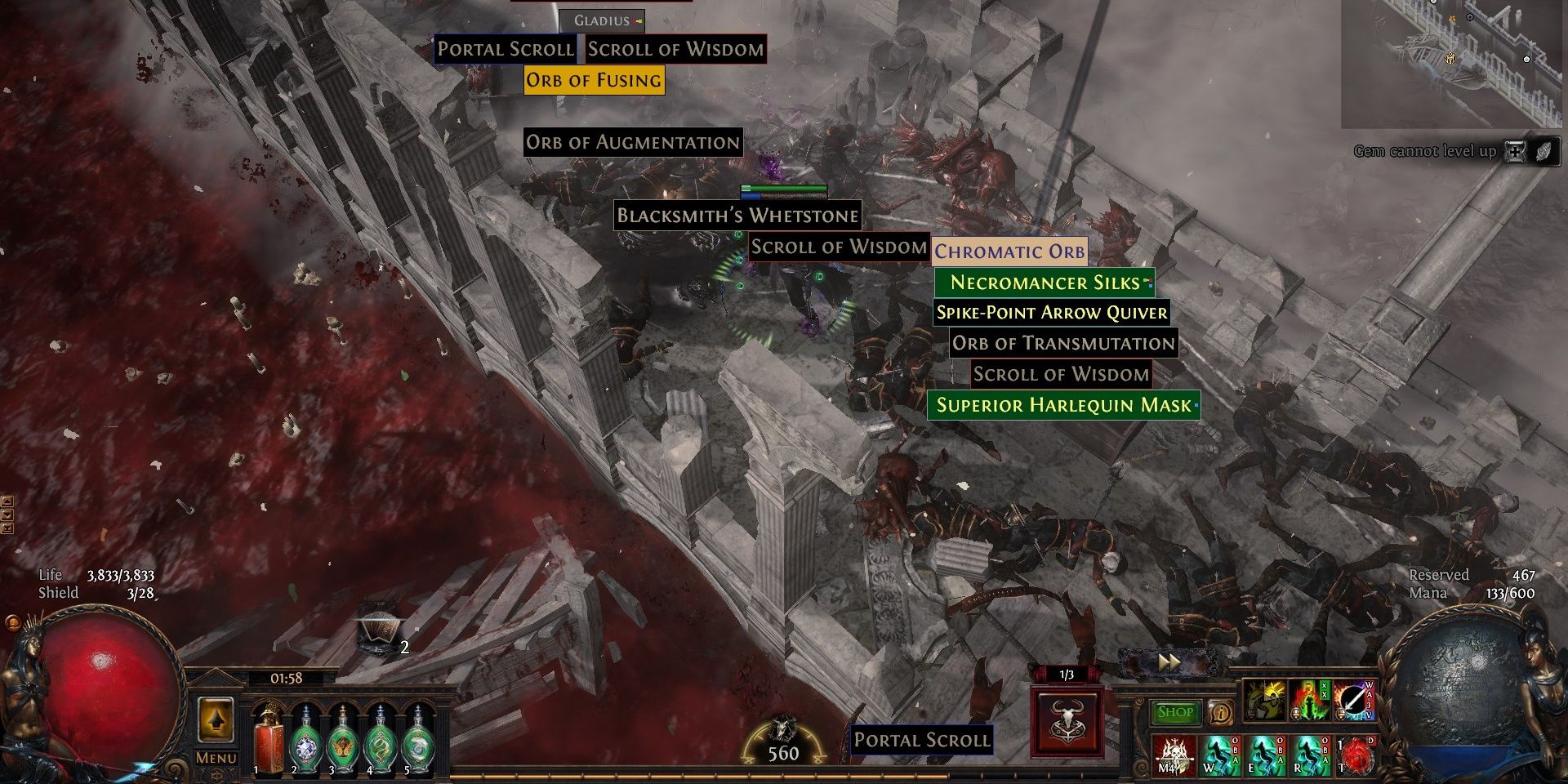
Loot filters allow players to filter out lackluster items while making useful items more apparent. There are a wide range of loot filters for Path of Exile, the most commonly used filter being Neversink's Loot Filter. Let's go over how to install it.
The easiest way to install this filter is to sync a Neversink loot filter with your Path of Exile account. From the FilterBlade.xyz website, navigate to the "Download" tab on the top of the webpage. The first option, Sync with PoE, is what we want.
Complete the three steps listed on the website.
- Sign in to PoE: Log in to your Path of Exile account from FilterBlade's link. If you use the console or Steam versions, an option will exist on the Path of Exile website letting you use those credentials. When finished, allow FilterBlade.xyz to access your account.
- Sync with PoE: This allows you to add the filter to your account directly. Click "Add New Filter" and enter the name, description, and platform for the filter. Click "Apply" when finished.
- Start up Path of Exile. When you have loaded into the game, open your options menu. Under the UI tab, look for the "List of Item Filters" option. Click the dropdown box to see your new filter. If it's not there, either reload the tab or restart Path of Exile. Click "Save" when you're done to enjoy your loot filter.
Source: https://www.thegamer.com/path-of-exile-complete-beginners-guide/
0 Response to "Path of Exile Easy Class to Start 30"
Post a Comment